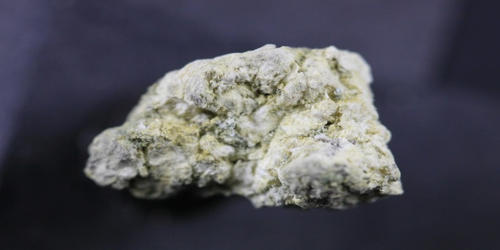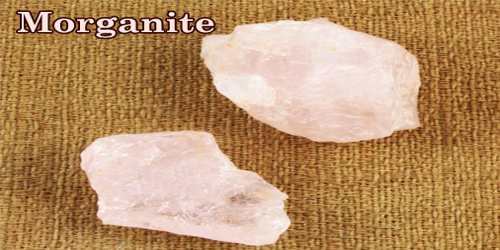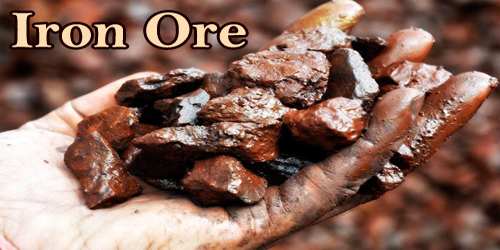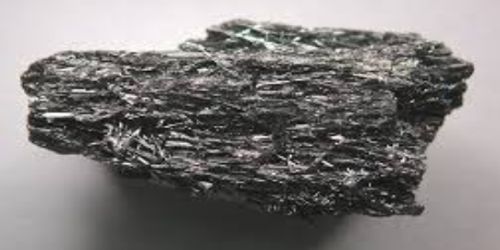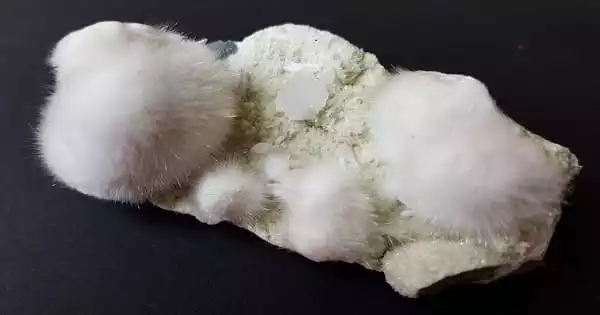Mendozite is a sulfate mineral, one of the alum series, with formula NaAl (SO4)2·11H2O. It is a mineral consisting of a monoclinic hydrous sulfate of sodium and aluminum. It is a hydrated form of sodium aluminum sulfate (soda alum). It is a sulfate mineral of the alum series; a hydrated form of sodium aluminum sulfate.
It was discovered in western Argentina in 1868, probably near San Juan. The exact location has been lost, but was described as “San Juan, near Mendoza”, and it is the latter city that gives the mineral its name.
General Information –
- Category: Sulfate minerals, alum series
- Formula: (repeating unit) NaAl (SO4)2·11H2O
- Crystal system: Monoclinic
- Crystal class: Prismatic (2/m) (same H-M symbol)
- Formula mass 440.26 g/mol

Properties
Mendozite is the monoclinic form of hydrated sodium aluminum sulphate, occurring as white translucent crusts and fibrous masses. It is very soluble in water, and so can only be found in dry regions: however, it can still effloresce (lose water of crystallization) in extremely arid climates, altering to tamarugite (the hexahydrate).
- Color: colorless
- Crystal habit: prismatic, pseudo-rhombohedral
- Cleavage: {100} good, {001} indistinct, {010} indistinct
- Mohs scale hardness: 3
- Luster: vitreous
- Streak: white
- Diaphaneity: transparent to translucent
- Density: 1.74 g/cm3
- Optical properties: biaxial (-)
Occurrence: Rarely formed by oxidation of pyrite in reaction with clays; may occur in volcanic fumaroles. It occurs in evaporites, presumably from the oxidation of sulfide minerals in the presence of clays.
Mendozite has been reported at Mendoza and elsewhere in Argentina, in Chile, at the solfatara of Pozzuoli near Naples, and in Box Elder County, Utah, but never before, to the writer’s knowledge, from Missouri.
Association: Tamarugite.
Information Source:
